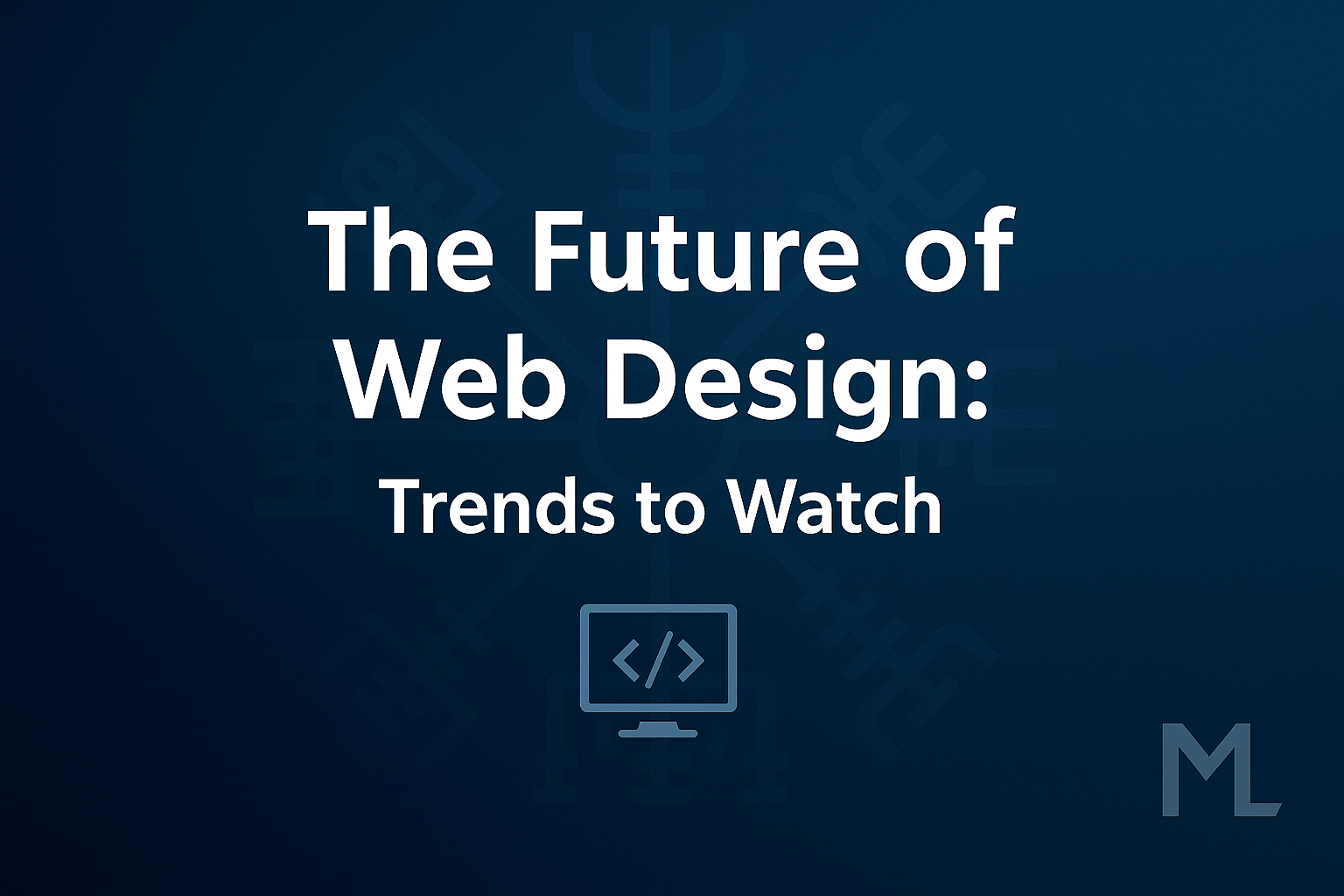The Future of Web Design: Trends to Watch

The web design landscape is constantly evolving, driven by technological advancements, changing user expectations, and creative innovation. As we move forward, several key trends are emerging that will shape how we experience the digital world.
1. Immersive 3D Experiences
Three-dimensional elements are becoming more prevalent in web design, thanks to improved browser capabilities and faster internet speeds. From subtle depth effects to fully interactive 3D models, designers are creating more engaging and memorable experiences.
Key Applications:
- Product showcases with 360° viewing
- Interactive storytelling experiences
- Architectural and real estate visualizations
- Gaming and entertainment websites
2. Dark Mode as Standard
Dark mode has evolved from a novelty to an expected feature. Modern websites are being designed with both light and dark themes from the ground up, not as an afterthought. This trend reflects growing user preference for reduced eye strain and battery conservation.
Benefits:
- Reduced eye fatigue, especially in low-light environments
- Better battery life on OLED screens
- Modern, sophisticated aesthetic
- Enhanced focus on content
3. Micro-Interactions and Animations
Subtle animations and micro-interactions are becoming essential for creating engaging user experiences. These small design elements provide feedback, guide users, and add personality to websites without overwhelming the interface.
From button hover effects to loading animations, these details make websites feel more responsive and alive. The key is subtlety—animations should enhance, not distract from, the user experience.
4. AI-Powered Personalization
Artificial intelligence is enabling unprecedented levels of website personalization. From content recommendations to adaptive layouts, AI is helping websites deliver more relevant experiences to each visitor.
Personalization Elements:
- Dynamic content based on user behavior
- Personalized product recommendations
- Adaptive navigation and interface elements
- Chatbots and virtual assistants
5. Minimalist Maximalism
This seemingly contradictory trend combines the clean simplicity of minimalism with bold, expressive design elements. The result is websites that are both functional and visually striking, using strategic pops of color, typography, and imagery to create impact.
The key is intentionality—every element serves a purpose, but those elements are allowed to be bold and attention-grabbing when appropriate.
6. Voice User Interface Integration
As voice assistants become more sophisticated, websites are adapting to accommodate voice navigation and commands. This trend is particularly important for accessibility and hands-free browsing scenarios.
Forward-thinking designers are considering how their websites will function when accessed through voice commands, ensuring content is structured for both visual and audio consumption.
7. Augmented Reality Experiences
AR is moving beyond mobile apps and into web browsers. WebAR technology allows users to experience augmented reality directly through their browser, no app download required. This opens up new possibilities for product visualization, virtual try-ons, and interactive experiences.
8. Sustainable Web Design
Environmental consciousness is influencing web design practices. Designers are focusing on creating energy-efficient websites that minimize data transfer and server load, contributing to reduced carbon footprints.
Sustainable Practices:
- Optimized images and compressed files
- Efficient code and minimal scripts
- Green hosting solutions
- Dark mode to reduce energy consumption
9. Advanced Scrolling Effects
Scroll-triggered animations and parallax effects continue to evolve, creating more sophisticated and immersive storytelling experiences. These techniques help guide users through content and create memorable visual journeys.
Modern implementations are smoother and more performant than ever, avoiding the janky scroll effects of the past.
10. Typography as a Design Element
Variable fonts and improved font rendering are enabling designers to use typography more creatively than ever. Text is becoming a central design element, with kinetic typography and experimental layouts creating visual interest and hierarchy.
Large, bold typography isn't just making statements—it's improving readability and accessibility across devices.
Implementing These Trends
While it's exciting to explore new design trends, remember that not every trend is right for every website. The key is to:
- Prioritize user experience: Trends should enhance, not hinder, usability
- Consider your audience: Choose trends that resonate with your target users
- Maintain performance: Beautiful designs mean nothing if they load slowly
- Stay authentic: Your website should reflect your brand, not just follow trends
Conclusion
The future of web design is exciting, diverse, and user-focused. As technology continues to evolve, we'll see even more innovative approaches to creating digital experiences. The most successful websites will be those that balance creativity with functionality, embracing new possibilities while never losing sight of the user's needs.
At Mythgard Labs, we stay at the forefront of design trends, implementing cutting-edge techniques while maintaining the usability and performance that your business needs. Ready to create a future-ready website? Let's talk.